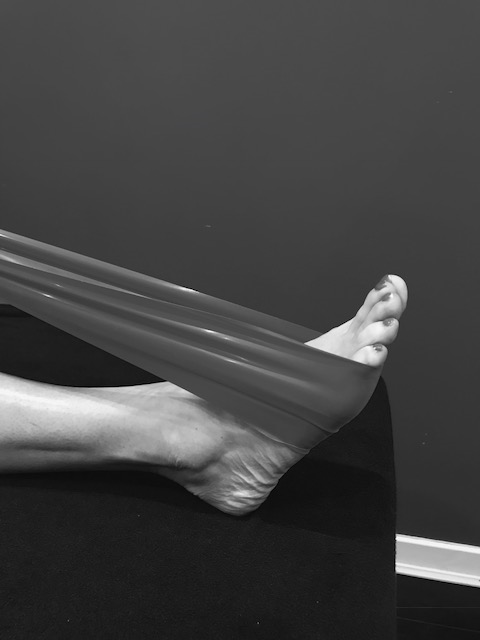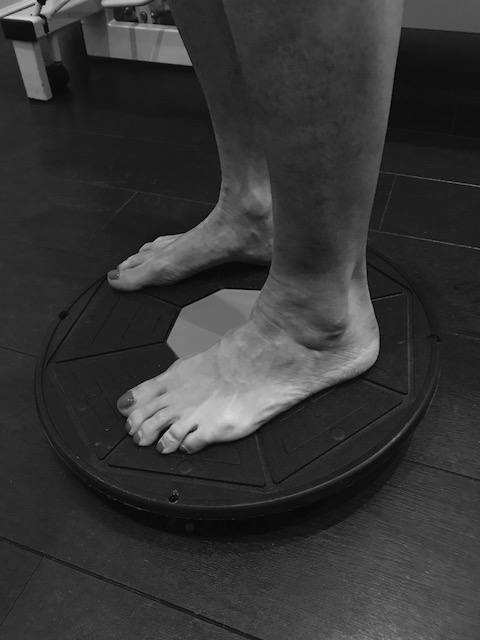Treatment and rehabilitation of an ankle sprain
Treatment and rehabilitation of an ankle sprain can begin after the initial ankle sprain diagnosis. There are a number of treatment goals and objective measurements which will guide the speed and intensity of the treatment/rehabilitation plan.
Ankle sprain- goals of treatment
- Diagnose the type and grade of ankle injury
- Reduce the pain and encourage early mobilisation
- Restore full range of functional ankle movement
- Regain normal strength around the ankle joint
- Restore ankle proprioception
- Graded return to running and function
Diagnose the ankle injury
Testing of the ligamentous structures will help identify the type and grade of injury and highlight the early treatment goals.
Reduce the pain and encourage early mobilisation
Most people will have heard of RICE as an early management guide for soft tissue injuries. But the plan can be more detailed than you think. (Credit to Bupa for the great graphics. As Bupa registered physiotherapists it is good to see useful information from medical insurance companies)
Although patients have heard of RICE and sometimes PRICE. We now know that mobilising injuries as soon as possible gives us better results and the use of ice itself is a matter of debate. So we prefer POLICE, see our blog for more details. But applying these basic principles is always our first management step.
Similarly we must try to avoid HARM:
Movement is an effective way to reduce pain so moving the ankle and foot in all directions repeatedly will aid recovery. Be guided by your pain it is okay for it to feel a small amount of discomfort but you should not aggressively provoke it.
Massage after 48-72 hours can desensitise the tissue and aid the movement of the area. But massage too soon and we stimulate blood flow causing more bleeding and swelling (which can delay recovery).
Although electrotherapy (mainly ultrasound and interferential therapy) was commonly used in early treatment of these problems, research shows they are no better than an active rehabilitation protocol.
Mobilisation of the joint (if restricted) can also aid pain relief.
Restore full range of functional ankle movement
In order to correct an abnormal gait we require the joint to move freely. The swelling and pain around the area may well adversely effect this and so restoration of normal movement is a priority. This is best achieved with active range of movement exercises and supplemented when required with joint mobilisations. The movements may initially be open kinetic chain but the ability of the joint to move freely when loaded is crucial. The functional ankle dorsiflexion test below is commonly used to gauge recovery.
Regain normal strength around the ankle joint
Active movements should be progressed to resisted exercises in both open chain and closed chain positions. The key muscle groups should be identified due to weakness on the manual muscles tests applied at examination. Typically for a lateral ligament injury the ankle evertors (peroneal muscles) are the most important but for different sprains other muscle groups may be more valuable.
Restore ankle proprioception
Proprioception is the ability of the body to sense its position. Ankle injuries commonly suffer from a deficit in ankle position awareness and this needs a program of exercises to regain the protective ability of the joint. This can be as simple as standing on one leg or placing the injured leg behind the non injured leg as though balancing on a tight rope. Both will make the system work harder and start to restore the tissue feedback mechanism. The exercises can be progressed towards unstable surfaces such as the balance cushions, wobble boards or other balance aids used by physiotherapists.
Graded return to running and function
By following a graded return to running/play program you should functionally load the tissues under stress. Building towards activities such as twisting, change of direction and jumping to make a full functional recovery.
The most worrying aspect of the treatment and rehabilitation of an ankle sprain is the risk of chronicity. Most people do not follow a planned recovery and are at significant risk of developing long term problems and unfortunately the advice most commonly given is rest it bit and no physiotherapy is offered!
If you would like help to treat or rehabilitate your ankle whether it was injured last week or last year! Then give us a call on 0131 478 4646 or book online to see one of our sports physiotherapists.












